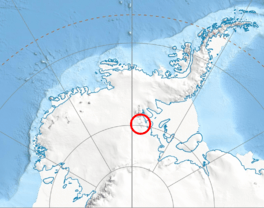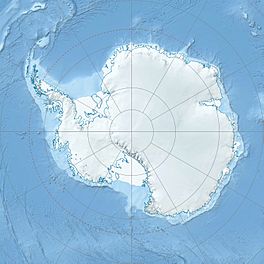Schneider Glacier facts for kids
Quick facts for kids Schneider Glacier |
|
|---|---|

Location of Heritage Range in Western Antarctica
|
|
| Type | tributary |
| Location | Ellsworth Land |
| Coordinates | 79°29′00″S 84°17′00″W / 79.48333°S 84.28333°W |
| Length | 15 nautical miles (28 km; 17 mi) |
| Thickness | unknown |
| Terminus | Balish Glacier |
| Status | unknown |
The Schneider Glacier (79°29′S 84°17′W / 79.483°S 84.283°W) is a large river of ice found in the very cold continent of Antarctica. It is located in a special area called the Heritage Range. This impressive glacier is about 15 nautical miles (which is about 28 kilometers) long.
What is a Glacier?
A glacier is like a very slow-moving river made of ice. It forms over many years as snow piles up and gets pressed into thick, dense ice. Glaciers are important because they hold a lot of the world's fresh water. They also help shape the land as they slowly slide across it.
Where is Schneider Glacier Located?
The Schneider Glacier is in Ellsworth Land, a part of Western Antarctica. It flows north between two areas called Dunbar and Inferno Ridge. As it moves, it joins up with another glacier called Balish Glacier. After that, both glaciers flow into the much larger Splettstoesser Glacier. Imagine many icy rivers coming together!
How Was It Discovered and Named?
Scientists and explorers have mapped many parts of Antarctica. The Schneider Glacier was mapped between 1961 and 1966. This mapping was done by the United States Geological Survey (USGS) using special surveys. They also used air photos taken by the United States Navy. These photos helped them see the glacier from above and draw accurate maps.
The glacier was named by the Advisory Committee on Antarctic Names (US-ACAN). They chose to name it after Commander Arthur F. Schneider. He was an important officer in the U.S. Navy. Commander Schneider worked as the Maintenance Officer for Squadron VX-6 during an important mission called Operation Deep Freeze in 1965. He later became the Commanding Officer of the squadron in 1968. Naming glaciers after people like Commander Schneider helps honor their contributions to exploration and science in Antarctica.


